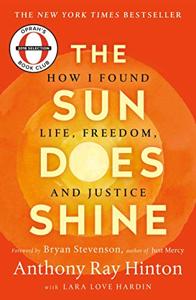
Want to learn the ideas in The Sun Does Shine better than ever? Read the world’s #1 book summary of The Sun Does Shine by Anthony Ray Hinton here.
Read a brief 1-Page Summary or watch video summaries curated by our expert team. Note: this book guide is not affiliated with or endorsed by the publisher or author, and we always encourage you to purchase and read the full book.
Video Summaries of The Sun Does Shine
We’ve scoured the Internet for the very best videos on The Sun Does Shine, from high-quality videos summaries to interviews or commentary by Anthony Ray Hinton.
1-Page Summary of The Sun Does Shine
Overview
On a hot summer day in 1985, Ray Hinton was mowing his mother’s lawn. He wasn’t afraid when the police came to arrest him because he knew he hadn’t committed a crime. What he didn’t know is that almost 30 years would pass before he regained his freedom. He didn’t know that 28 years on death row would pass; after all, there was an electric chair right next to his cell.
The case of Hinton is a great example of how the justice system can go wrong. He was poor and black, so he didn’t have much chance to win his initial trial. Even though there was evidence that proved his innocence, he had to suffer through solitary confinement on death row until a lawyer fought for many years just to get him released. Despite all that happened to him, Hinton found freedom in life on death row and discovered an amazing imagination within himself. He also learned how compassion could help him move past ideological differences with fellow inmates and why forgiveness is important instead of resentment towards others who’ve hurt you in some way or another.
Big Idea #1: Hinton grew up in Alabama against a backdrop of racial discrimination and tension.
In the beginning of the 1970s, Hinton and his friends were about to attend a white school in Alabama. His mother had some advice for him: Don’t try to talk to any white girls, keep your eyes down, be polite with teachers and follow the rules. Get home fast.
Growing up black in the 1970s meant experiencing a lot of racism.
In the past, Alabama was a segregated state and black people could not go into diners. However, in the 1970s things began to change. Black people were able to sit at counters and order burgers from servers who did not seem happy about it.
Although segregation laws were abolished in the 1970s, it was still a dangerous time. There were many instances of bombings and violence against black people, so Hinton’s mother warned him to run if he ever saw a car full of white men.
Hinton didn’t have much success at school either. One time, while playing basketball for his school, he scored 30 points in a half – a school record. He walked off the court to chants of “Hin-ton!” But it turned out that the other team was actually chanting something offensive. His pride quickly turned into shame when he realized this.
Despite growing up in a rough environment, Hinton’s childhood was largely happy. His mother raised him well and he wasn’t a bad kid. He stole a car when he was young because hitchhiking as a black person is very dangerous and it was hard to get around. Like most kids his age, he wanted to work and meet girls.
He drove this car for two years until he heard that the police were looking for him. He had felt guilty growing inside him, and after a while he confessed to his mother, who told him she raised her son to admit his wrongdoings. He turned himself over to the police and served some jail time; however, it was not an enjoyable experience. His food was bad, his cell stank and he hated being restricted in such a way. Prison life wasn’t something he wanted to continue with because of those reasons; therefore, it wasn’t good for him.
Big Idea #2: Hinton was arrested for crimes he didn’t commit and witnessed blatant police racism.
On February 23, 1985, a restaurant manager was shot twice during a robbery in Birmingham. A similar incident happened at Captain D’s on July 3. Sidney Smotherman, the manager of Quincy’s steakhouse was shot and survived an attack on July 25. He described his attacker as being black and over six feet tall with dark skin and facial hair. Hinton worked that night shift at the warehouse job when Smotherman was attacked, but he signed in for work that day so there is no way he could have been involved with the shooting.






